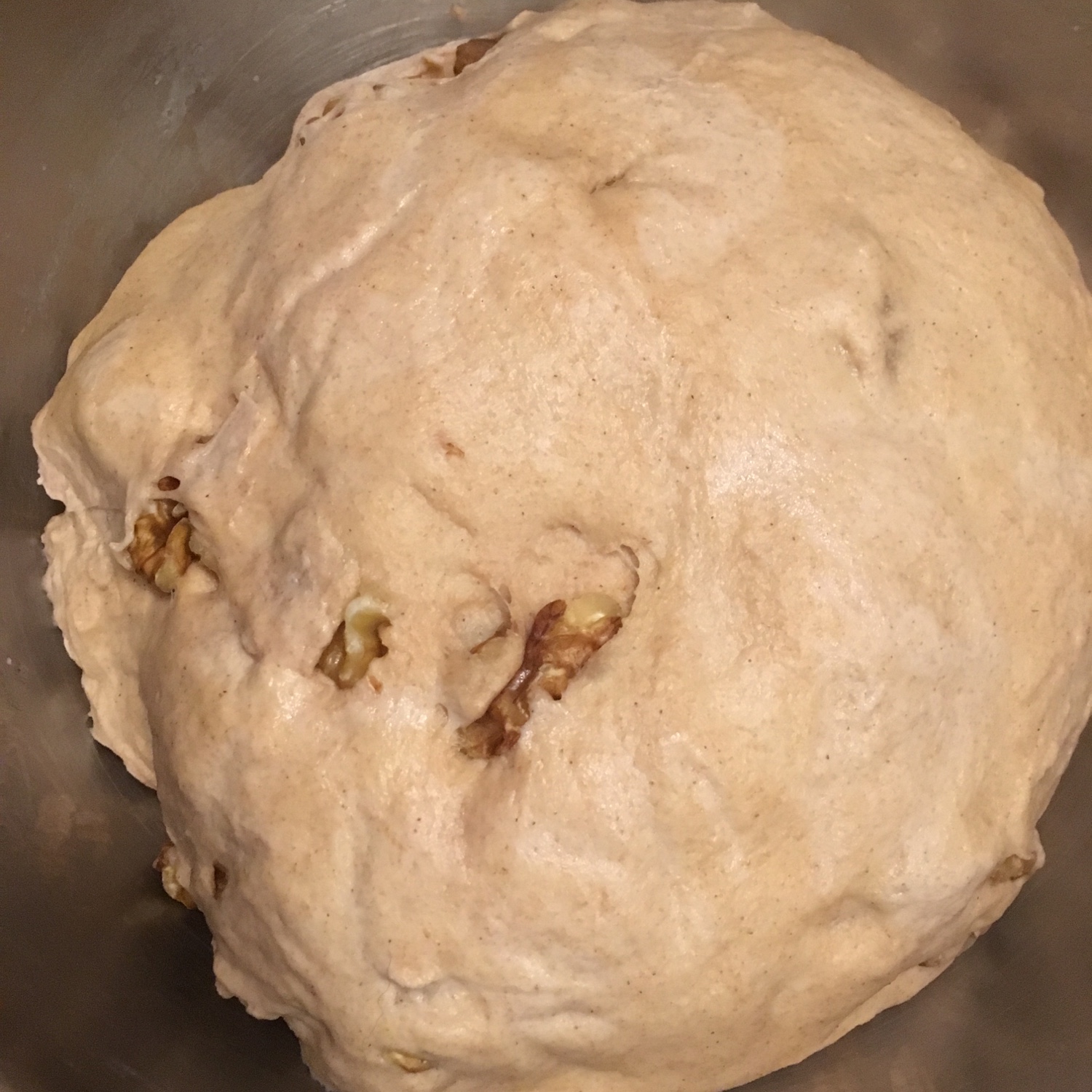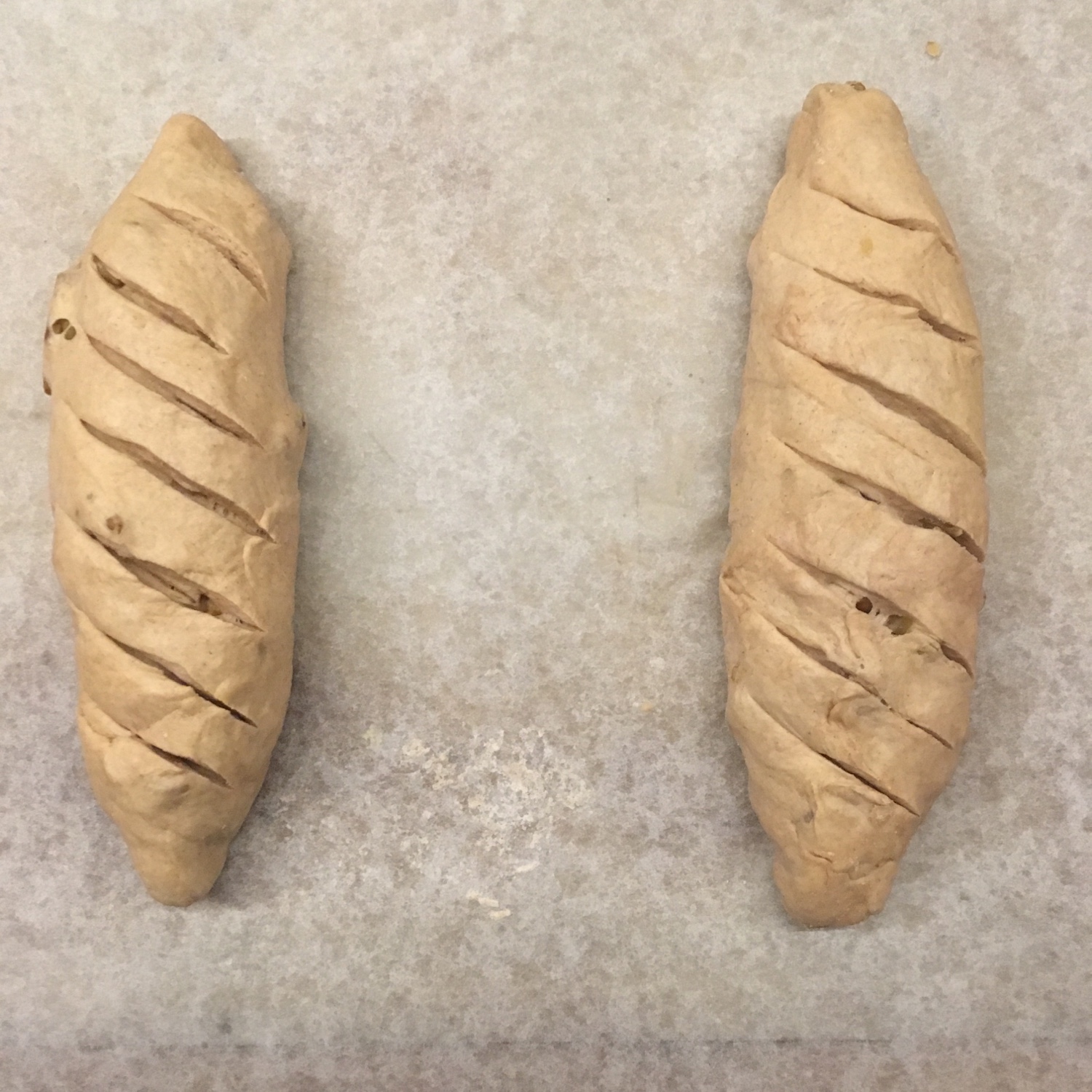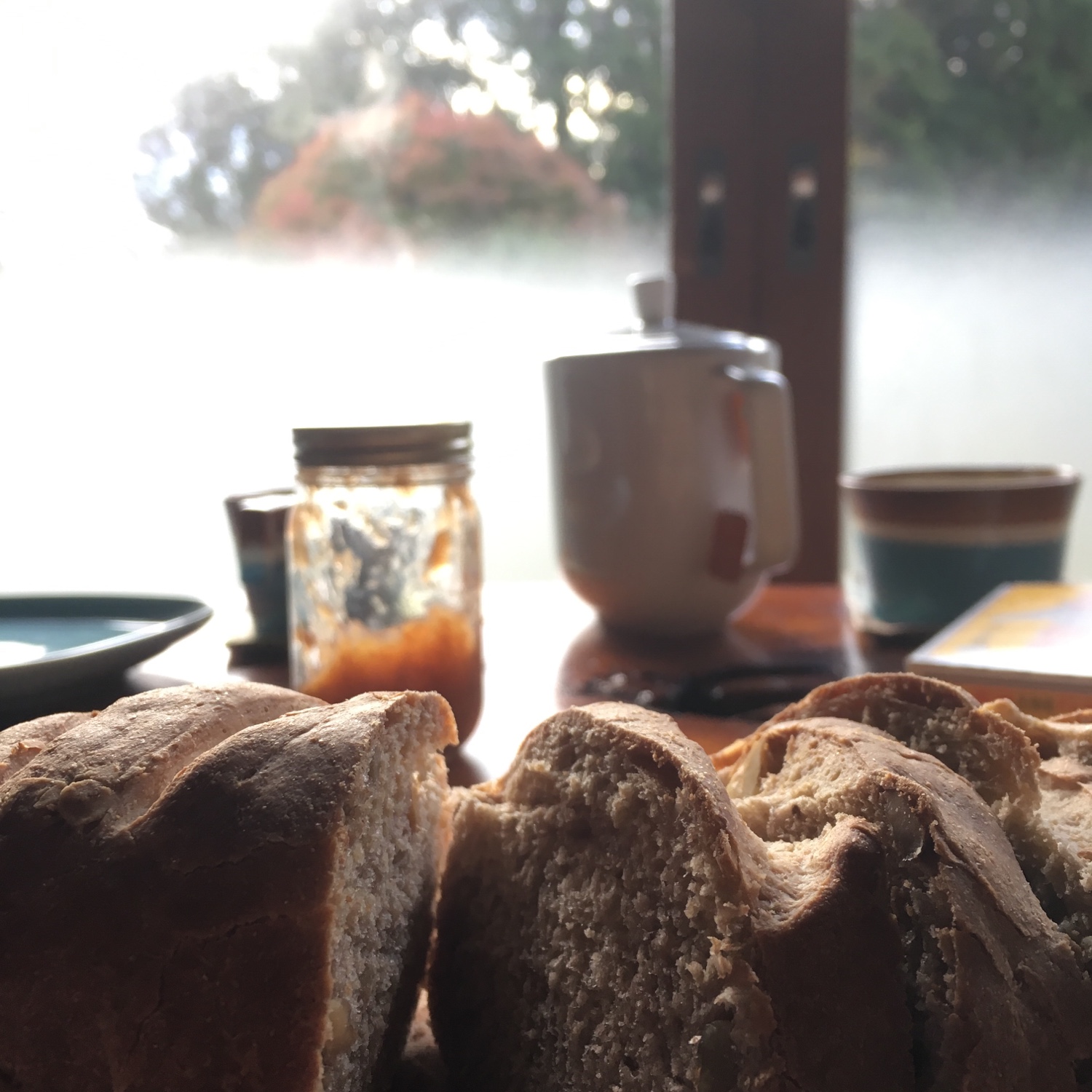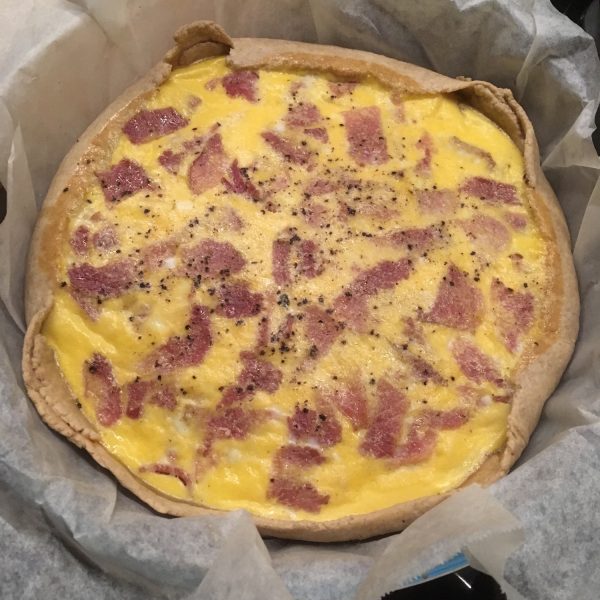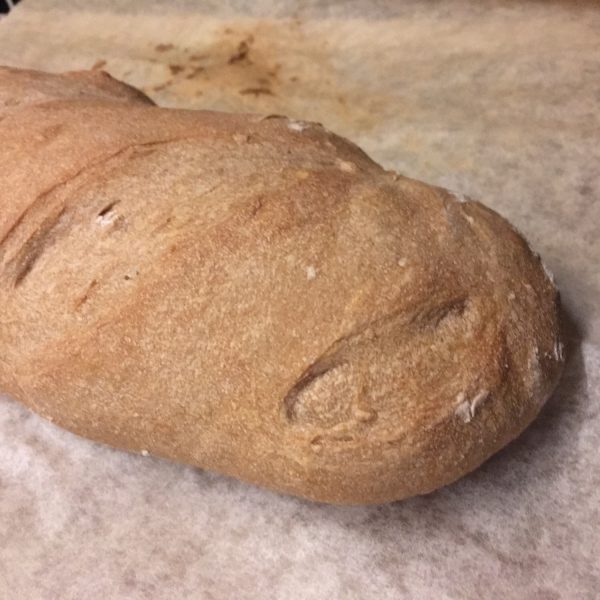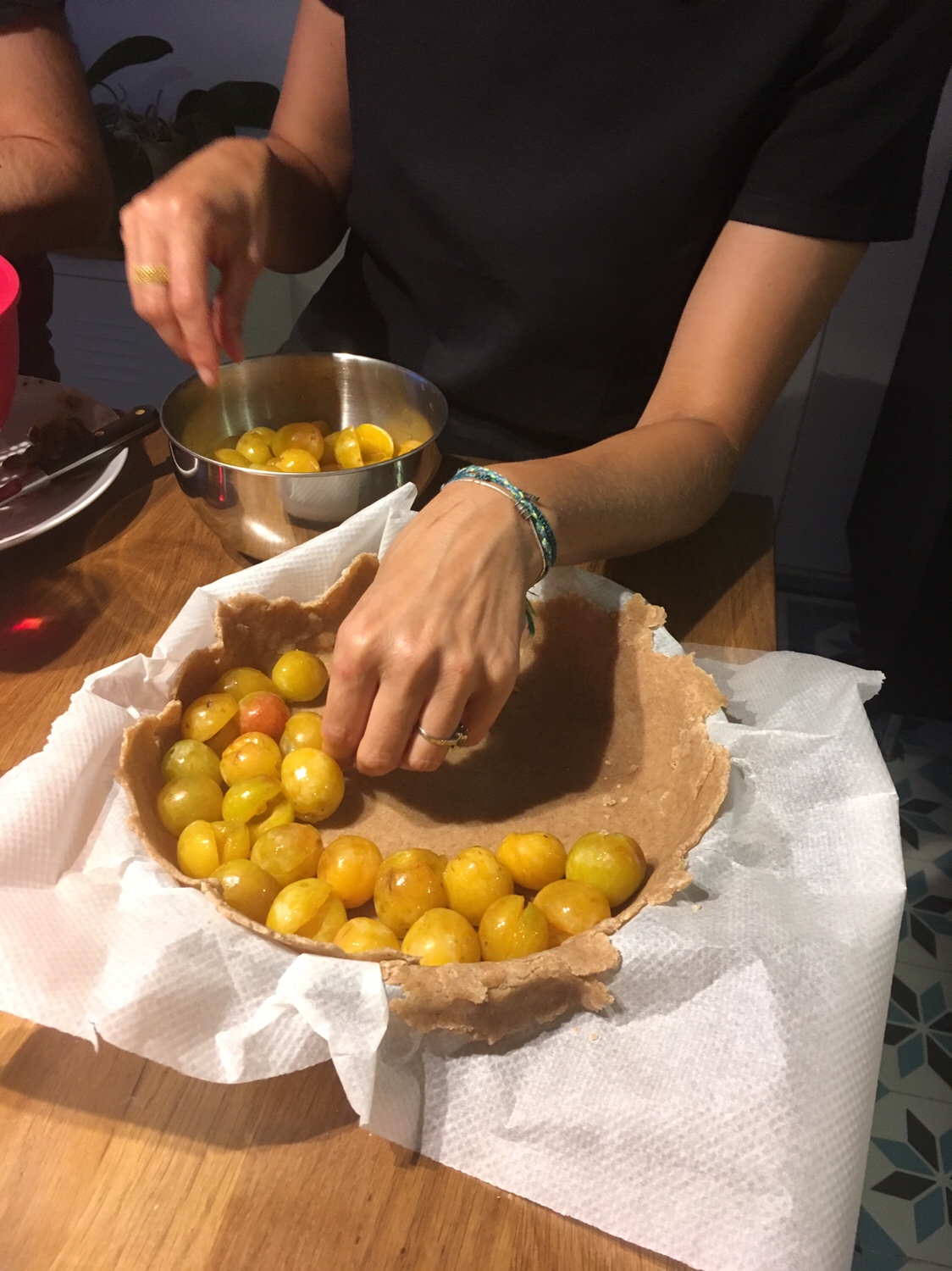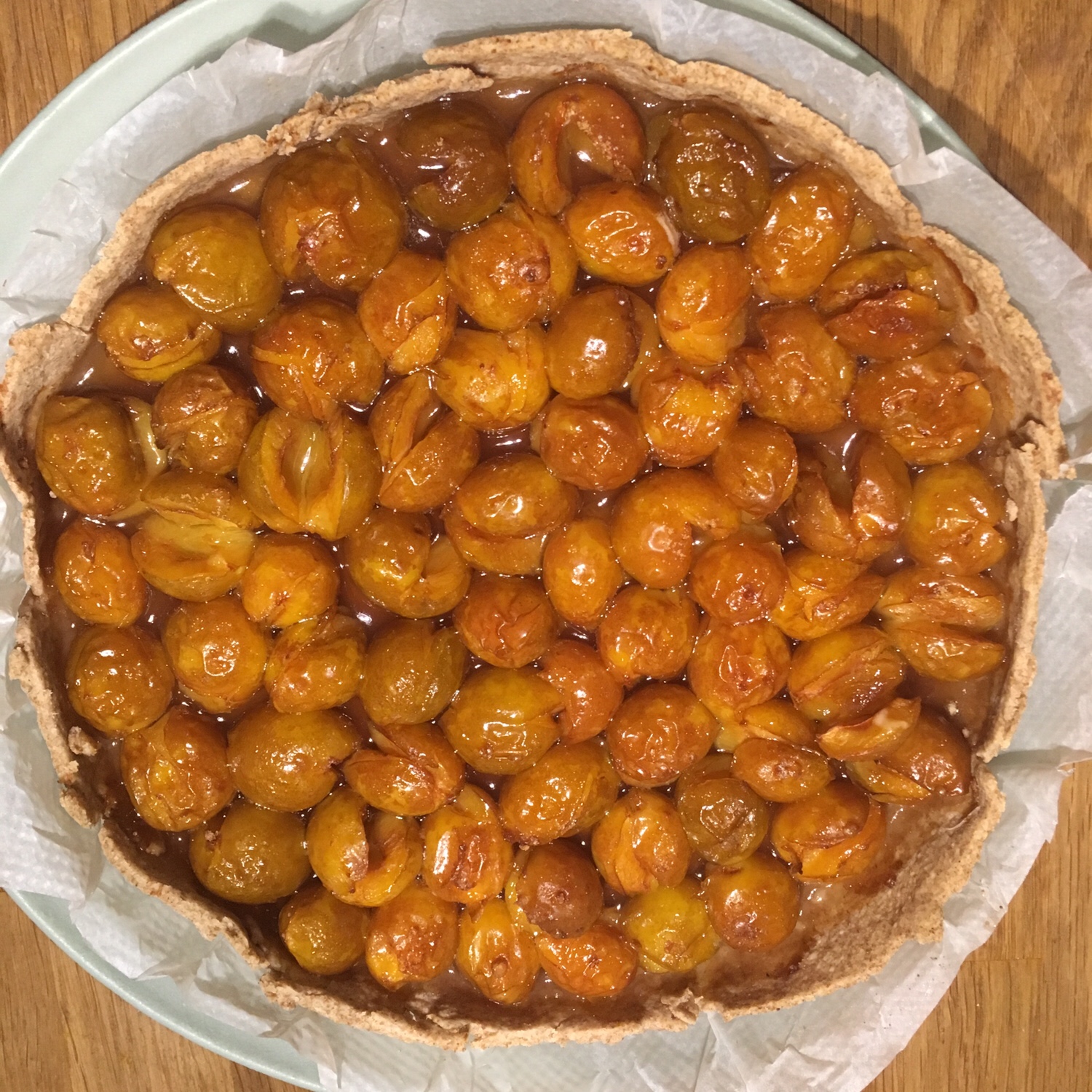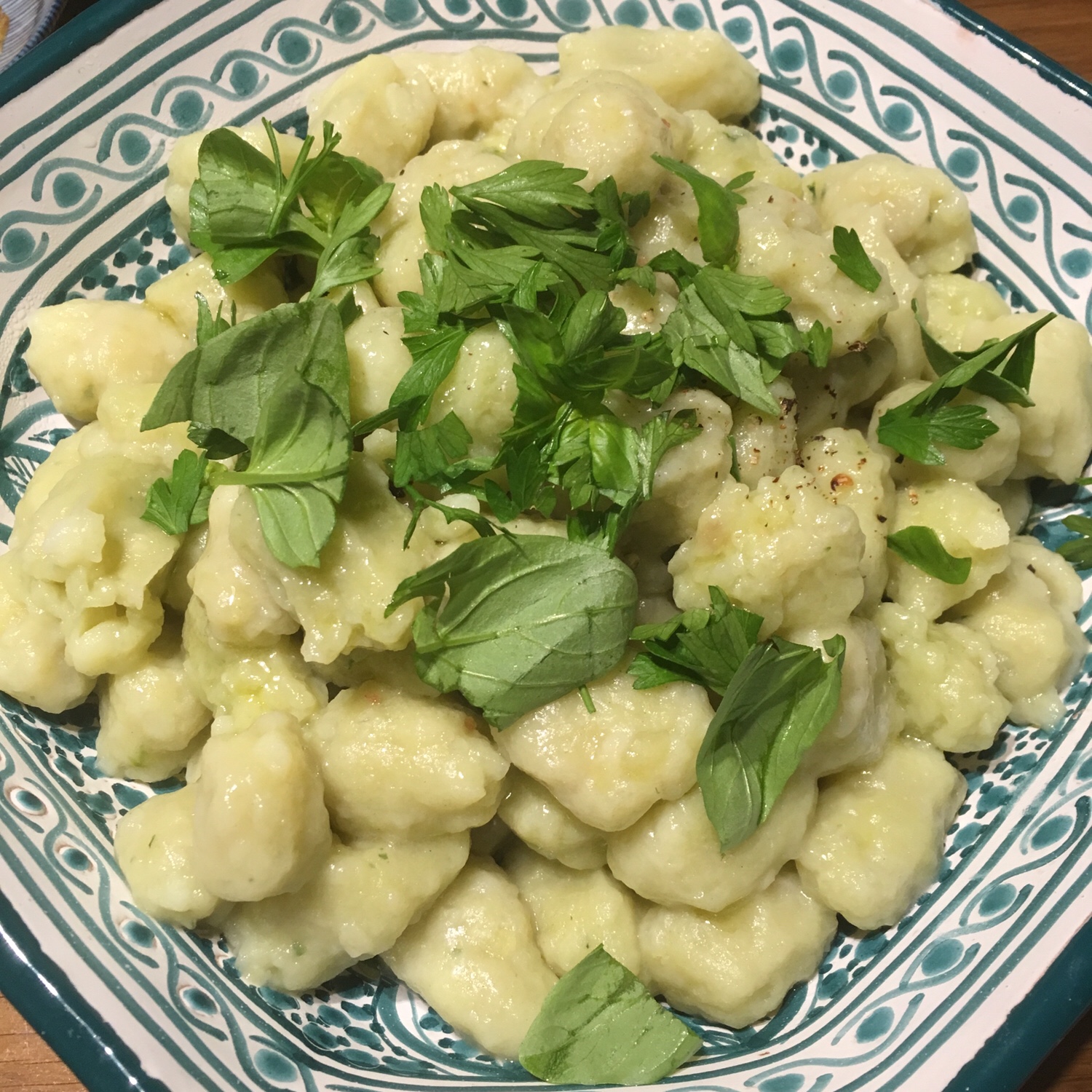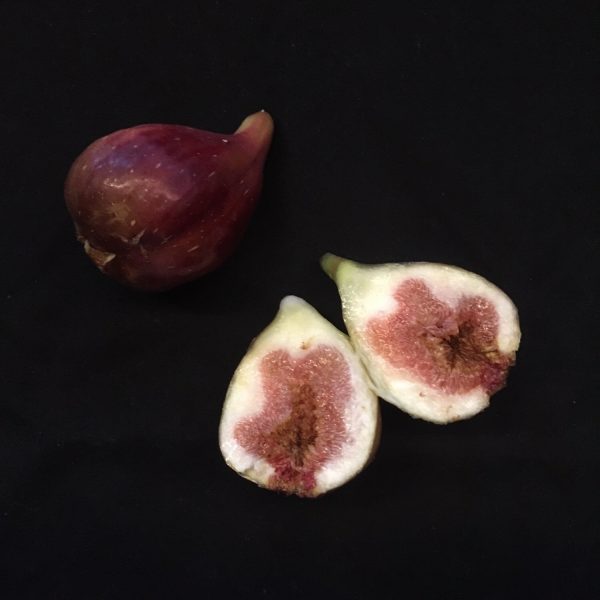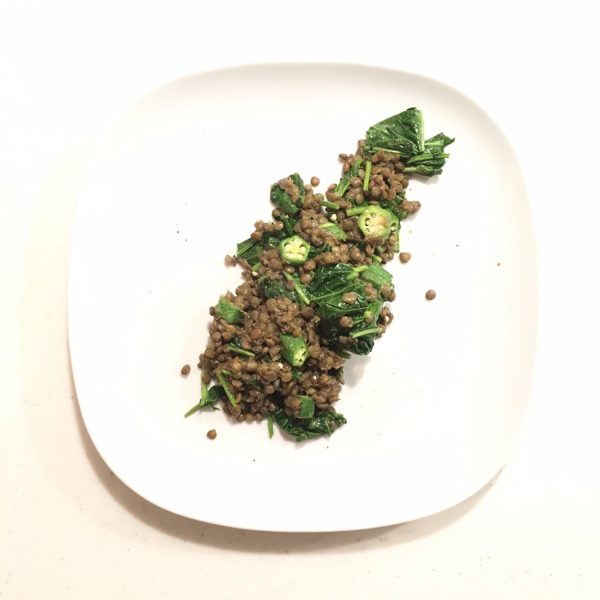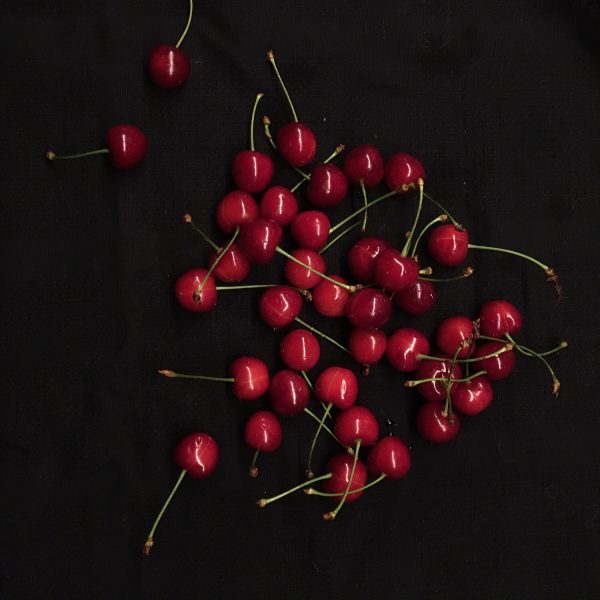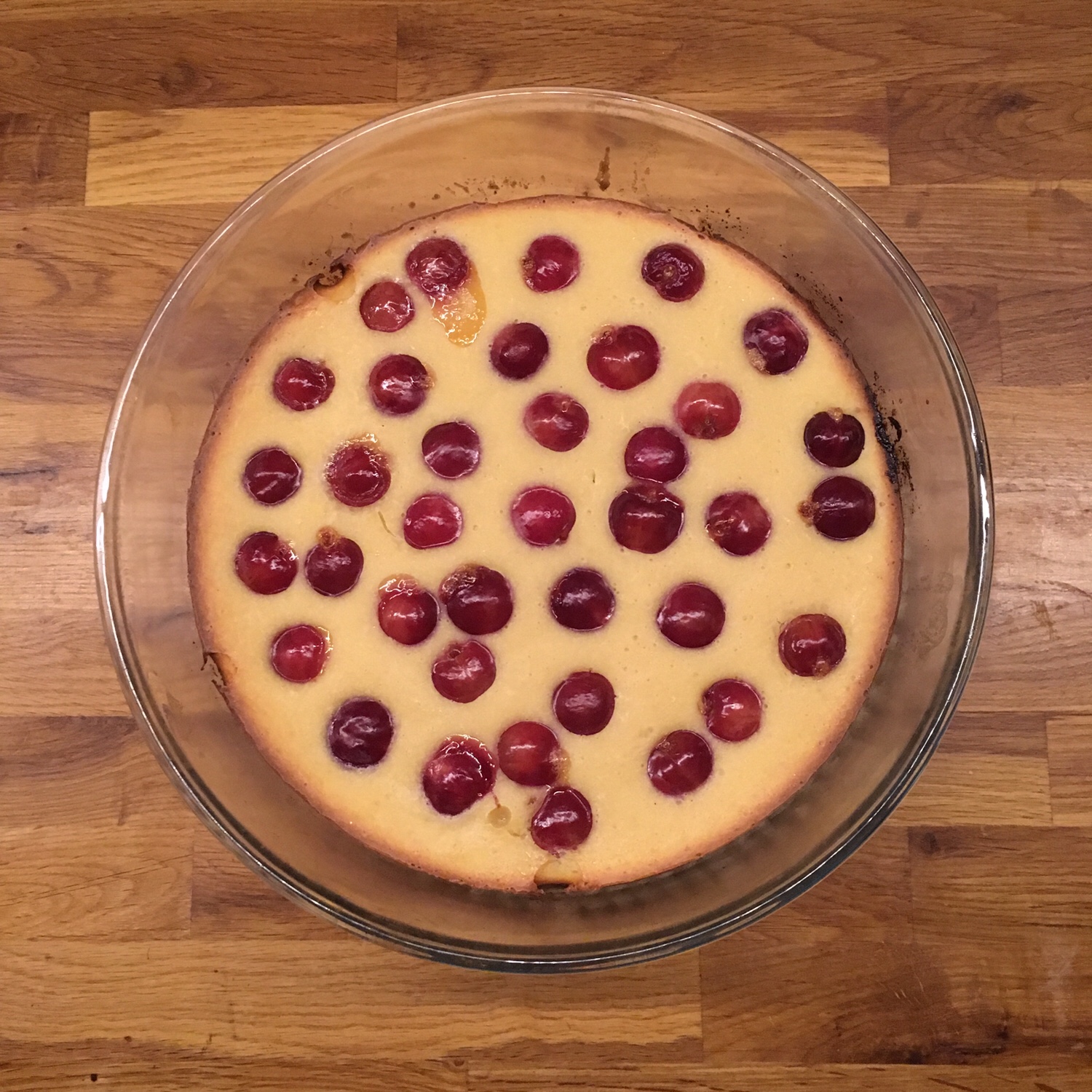After a few weeks without kneading and baking bread it was time to get my hands in the dough again. First wanted to make a rich brioche for breakfast since it has been chilly the past few days… but then I realized I had no eggs… so I opted for bread… but I wanted something a little different than the usual breads I have made last month. I chose a walnut bread, slightly sweet and soft, from my Kayser bread making book, one of the few that I hadn’t tested yet. So I started preparing for it, measured the flour in a bowl, add water, salt, sugar and yeast… but before I could start kneading or carpenter arrived to talk about the plan of our next project, so I had to leave the dough. After about an hour later when I started kneading I felt things were doing really good. The dough was easy to knead, it became very soft and smooth. And since the house was rather cold I decided to use a trick I used once or twice in the past and that seems to be the best way to guaranty a temperature that will allow the dough to raise in a proper time: I put hot water in the sink and leave the dough in a metal bowl just floating around. After 2h the dough had perfectly risen and was ready to be prepared for the shaping. The dough had risen so well that shaping it was perfect and the second rise went very well. I finally baked the breads, but not until golden because I like to eat my bread hot in the morning just out the oven, so I keep the baking to perfection for the second baking round. And the result was exactly what I wanted: a very soft bread, with a thin crunchy crust. Overall, the waiting before the kneading and the rise in the warm water just made the though great! Two tricks that I will try again for sure!
Here my recipe for the bread:
Walnut bread (for two breads)
– 250g of flour, I used 2/3 of white flour and 1/3 of whole wheat
– 115g of water at 20deg
– 20g of sugar
– 8g of salt
– 6g of dry yeast
– 80g of loose walnuts kernels
In a bowl mix the flours, the yeast the sugar, the salt and half of the water. Mix well, add the rest of the water and knead until soft and smooth. Add the walnuts. I didn’t crush them, I prefer having them as whole. I kneading in a metal bowl for better heat conductivity. Then I leave for 2h in the warm water. After that shaped two balls with the dough, waited another 30min before shaping the two breads and waiting 90min at room temperature (about 16deg in our house). I finally baked 18min at 230deg. Took out of the oven when ready and let cool down. I put in the cold oven and baked at 180deg for 10min in the morning just before eating.
